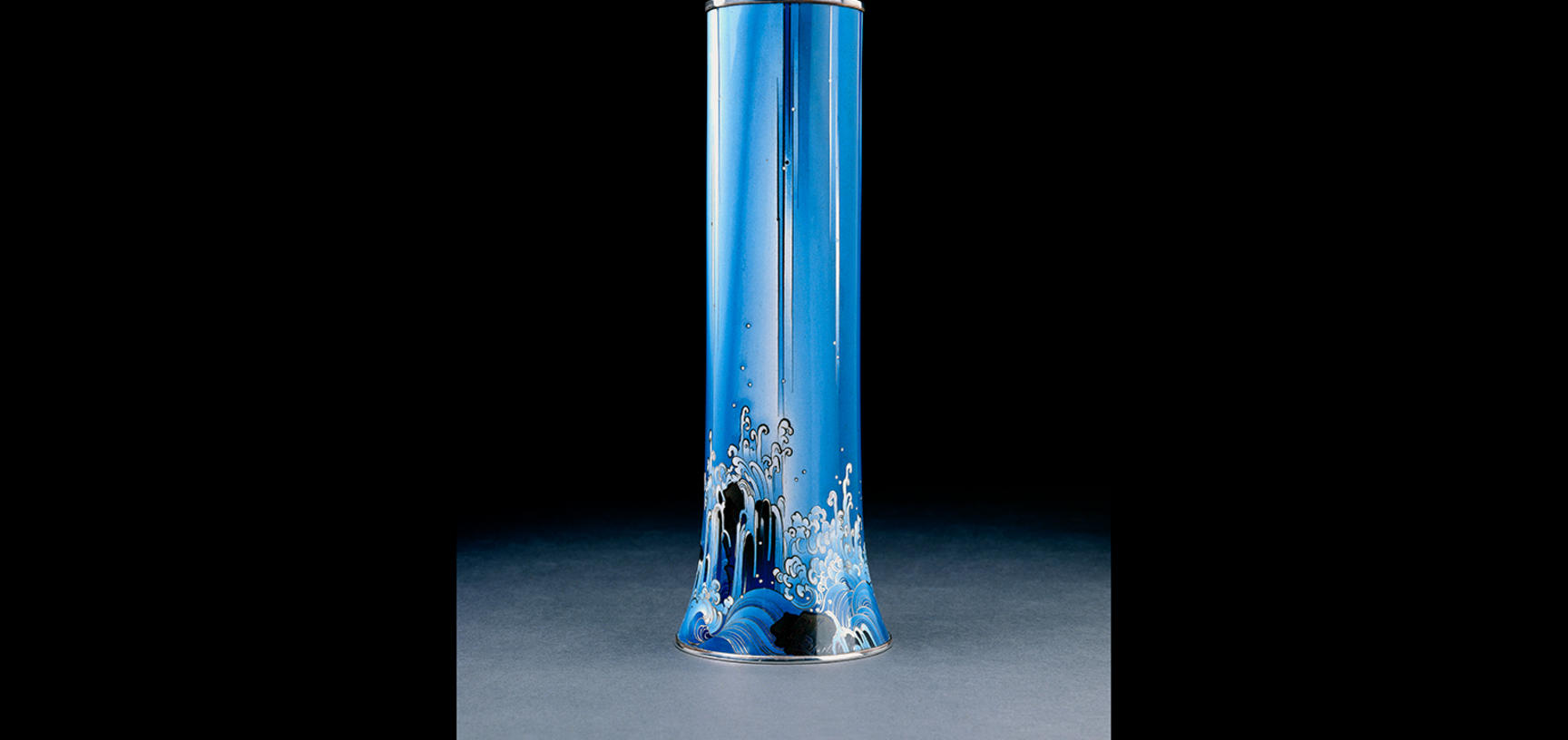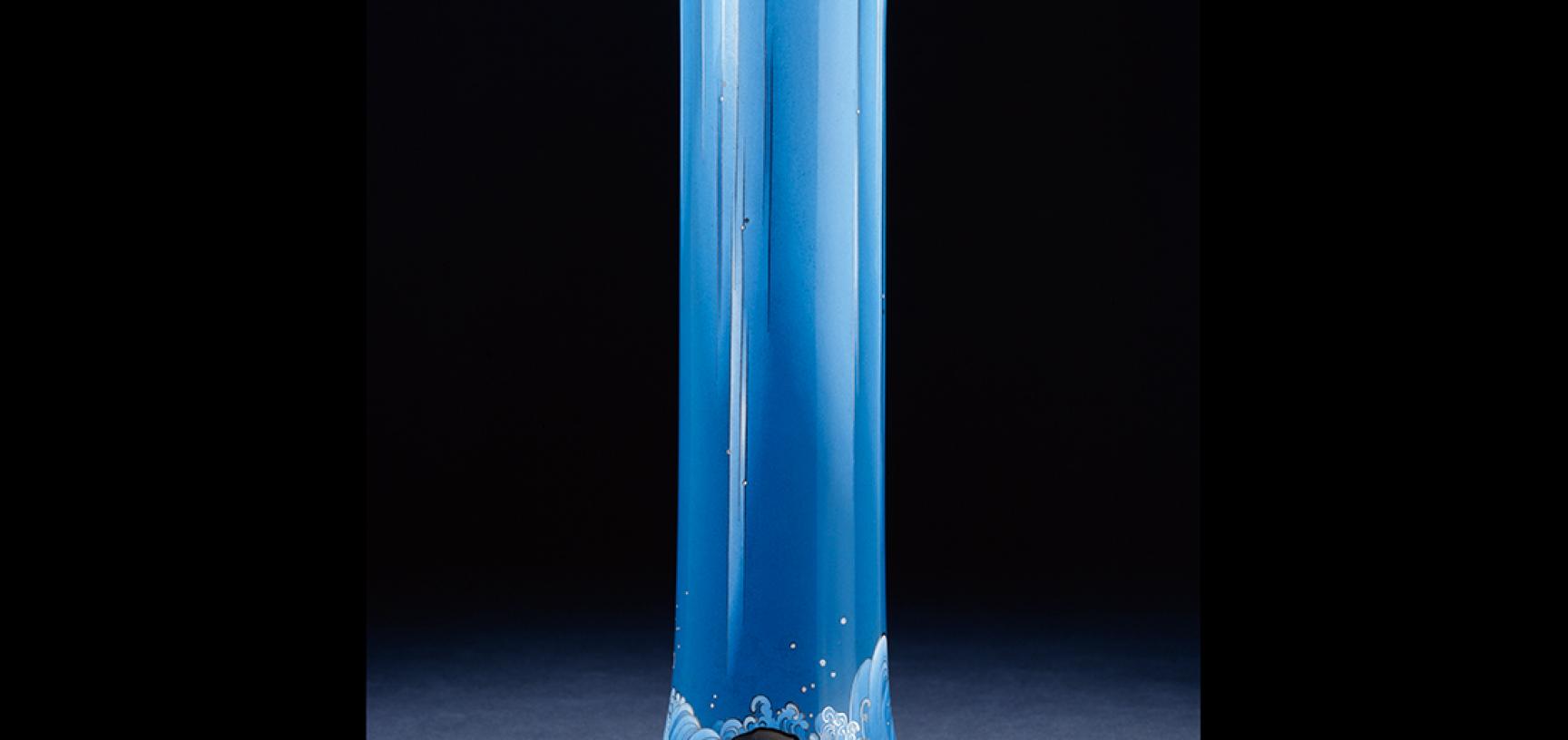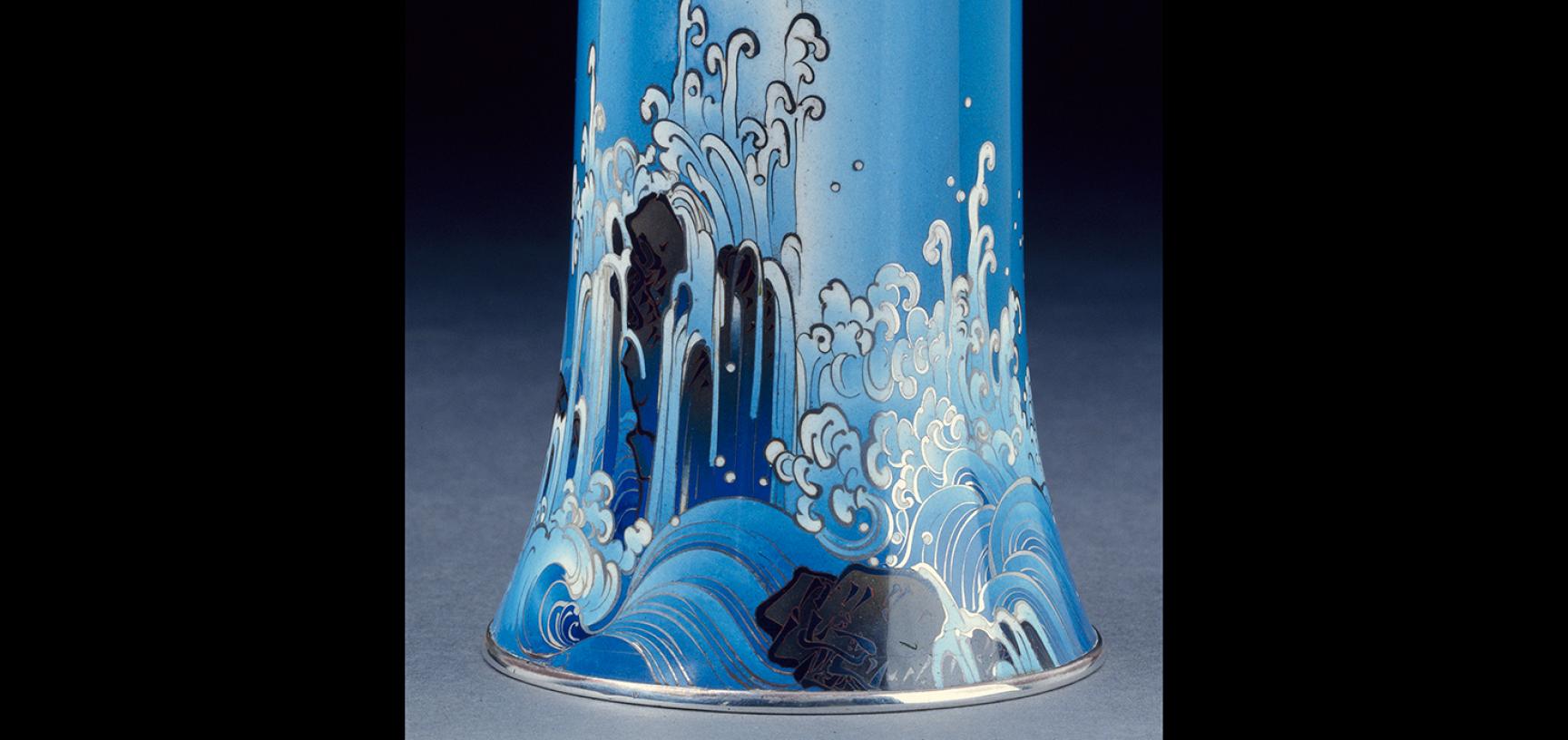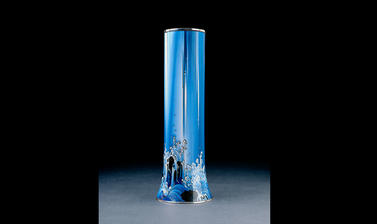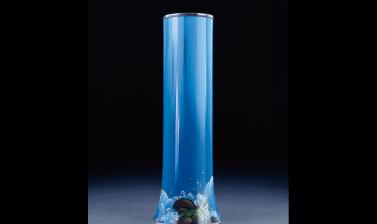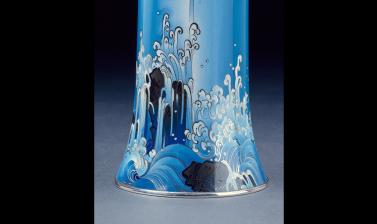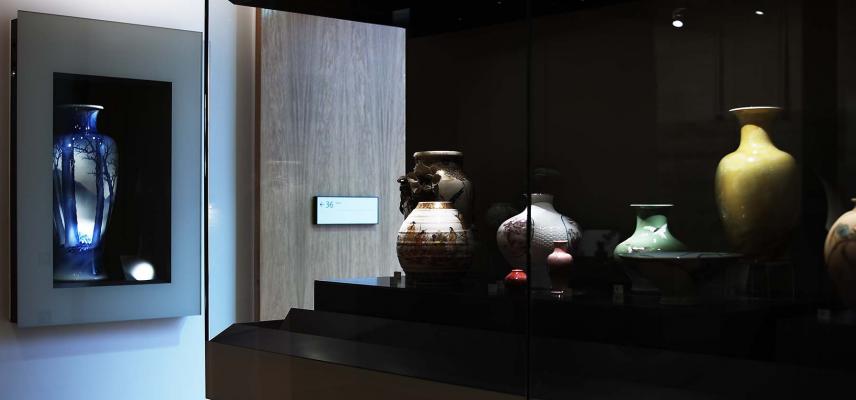VASE WITH WATERFALL OVER ROCKS
Namikawa Yasuyuki (1845-1927)
Namikawa Yasuyuki (1845-1927) was perhaps the most celebrated enameller of the Meiji period (1868-1912), when cloisonné enamelling reached its peak in Japan. At this time the government were encouraging artists to create works for national and international exhibitions. As standards improved, cloisonné became a popular export item. Yasuyuki founded a hugely successful workshop in Kyoto and won many gold and silver medals at almost all the great International Expositions. In 1896 he was nominated an ‘Imperial Artist’.
This vase is predominantly cylindrical in shape, widening at the base where the waterfall foams over rocks and plants. It is mainly sculpted in silver wire on shades of blue enamel, but also uses some shakudō wire, and brown and green enamel for rocks and leaves. Yasuyuki made this vase shortly before he retired in 1915.
In traditional cloisonné, wires are attached to a metal body and coloured enamels are applied between the wires. Yasuyuki’s great skill lay in the way he sculpted the wires into different shapes and widths, so that they became an important part of the picture in themselves.
Vase with waterfall over rocks, Namikawa Yasuyuki (1845–1927)
1910–1915
Metal with shakudō and inlaid with silver wire cloisonné enamel
24.9 x 6.2 x 8.5 cm
View on our online Collection Online Site: EA2002.177
License this image - visit the Ashmolean Image Library


